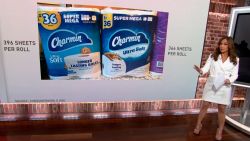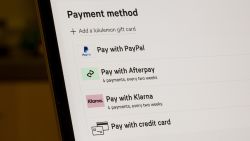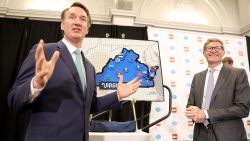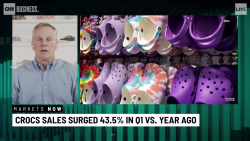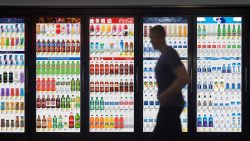Clothing chain Gap (GPS) is turning to a risky strategy to clear outits glut of unsold merchandise caused by the pandemic.
It’s called “pack and hold,” and it basically means exactly that.
The retailer is planning to store the summer and fall products that it couldn’t sell and bring them into its locations in 2021. This includes merchandise that was never delivered to shops across Gap’s namesake brand as well as Banana Republic, Old Navy and Athleta. Gap didn’t say whether the year-old products would sell at regular price or at a discount.
“We implemented a flexible pack-and-hold inventory approach, whereby [the] summer and fall inventory that we will be unable to sell due to store closures and potentially lower demand will be held until next year’s selling season,” Gap’s chief financial officer Katrina O’Connell, said during the company’s earnings call on Thursday. Overall, Gap recorded a $932 million loss, a record in its 51-year history.
Gap, which operates more than 2,750 of its namesake stores as well as Banana Republic, Old Navy and Athleta brands shops in North America, temporarily closed 90% of its locations on March 19. It has since reopened 1,500 stores.
While O’Connell said that Gap will incur some cost to sitting on the unsold merchandise, it believes storing it until next year is a better option than putting it into stores this year when, amid a collapse in consumer spending, it will likely have to resort to heavy discounting to entice consumers to shop its brands.
“It’s very unusual and only a few retailers can pull it off,” said Marshal Cohen, chief industry analyst with market research firm NPD Group.
Cohen said the strategy could work if no one, other than the retailer itself, has seen Gap’s summer and fall fashions. Otherwise consumers could be turned off by what they perceive to be stale merchandise.
Oliver Chen, senior equity research analyst with Cowen covering retail, also highlighted the risk of Gap’s “pack and hold” strategy.
“We are cautious about whether this season’s products will resonate with consumers next year, given rapidly changing consumer preferences,” he wrote in a note Friday. “We also view there is a risk associated with the possibility of not having enough of on-trend items for the fourth quarter of 2020, which is the most important quarter for Gap.”
It’s likely the merchandise in question won’t sell at full price, said Neil Saunders, managing director of GlobalData’s retail division.
“We can assume Gap will try to sellthe merchandise at normal price and then quickly discount it, as it does anyway,” he said. “This is a regular pattern with Gap.”




